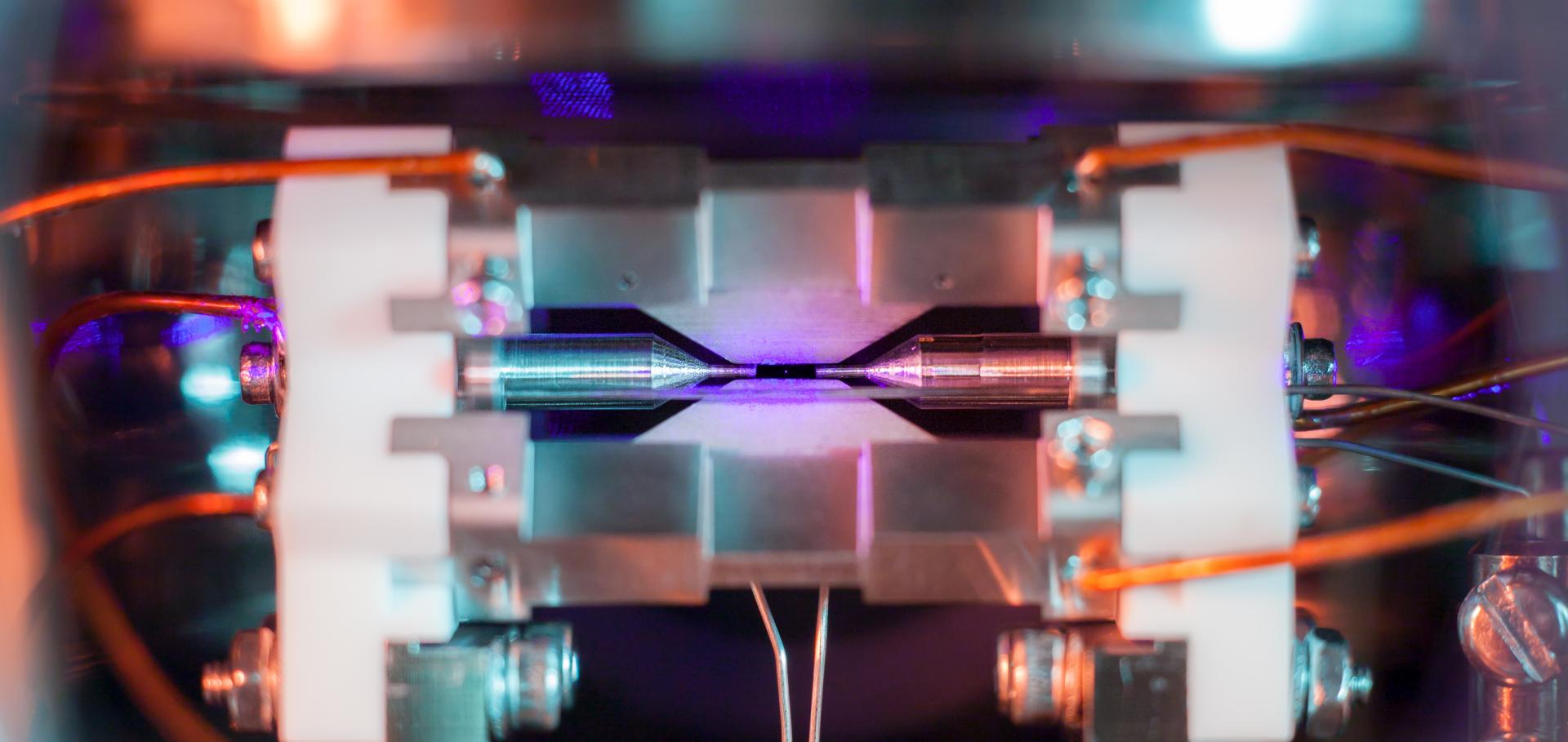Urukul – Open-source Frequency Synthesizer Module for Quantum Physics
International Journal of Electronics and Telecommunications Polish Academy of Sciences Chancellery (2021) 123-128-123-128
Open-source multi-channel Smart Arbitrary Waveform Generators (SAWG) for quantum information processing
Institute of Electrical and Electronics Engineers (IEEE) 00 (2021) 443-444
Benchmarking a high-fidelity mixed-species entangling gate
Physical Review Letters American Physical Society 125:8 (2020) 080504
Abstract:
We implement a two-qubit logic gate between a 43Ca+ hyperfine qubit and a 88Sr+ Zeeman qubit. For this pair of ion species, the S–P optical transitions are close enough that a single laser of wavelength 402 nm can be used to drive the gate but sufficiently well separated to give good spectral isolation and low photon scattering errors. We characterize the gate by full randomized benchmarking, gate set tomography, and Bell state analysis. The latter method gives a fidelity of 99.8(1)%, comparable to that of the best same-species gates and consistent with known sources of error.ARTIQ and Sinara: Open Software and Hardware Stacks for Quantum Physics
Optica Publishing Group (2020) qtu8b.14
Probing qubit memory errors at the part-per-million level
Physical Review Letters American Physical Society 123:11 (2019) 110503
Abstract:
Robust qubit memory is essential for quantum computing, both for near-term devices operating without error correction, and for the long-term goal of a fault-tolerant processor. We directly measure the memory error εm for a 43Ca+ trapped-ion qubit in the small-error regime and find εm<10−4 for storage times t ≲ 50 ms. This exceeds gate or measurement times by three orders of magnitude. Using randomized benchmarking, at t = 1 ms we measure εm=1.2(7)×10−6, around ten times smaller than that extrapolated from the T∗2 time, and limited by instability of the atomic clock reference used to benchmark the qubit.


